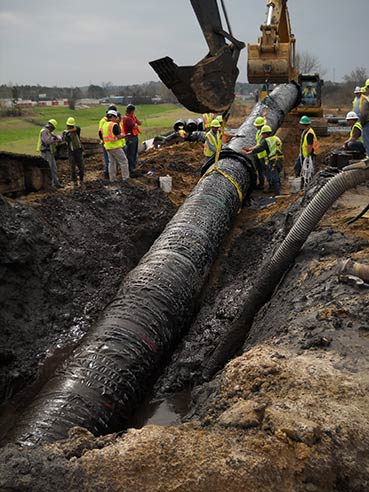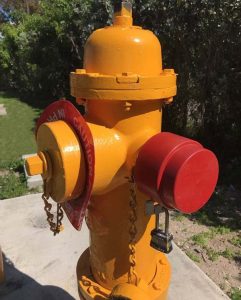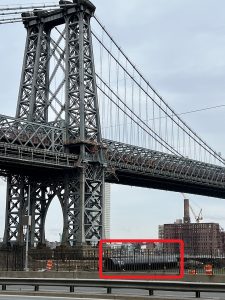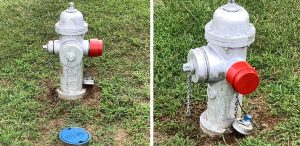
With the advent of new construction technologies comes the need for proven field tests to advance their use. Horizontal directional drilling (HDD) using ductile iron pipe, first introduced in 1994, is a method of installing the pipe underground without digging a trench. With HDD, a gentle arcing bore path is drilled horizontally beneath the surface, then the pipe is joined section by section above ground, and then pulled through.
“HDD is ideally suited for areas where open cut trenches are not desirable, such as under waterways, roadways, congested areas or environmentally sensitive areas,” said Ralph Carpenter, project manager for trenchless with AMERICAN Ductile Iron Pipe, a division of AMERICAN Cast Iron Pipe Company, in Birmingham, Ala. “And we’ve used it successfully in installations reaching nearly 2,200 feet in length.”
The question remains: What is the maximum length of pipeline that can be installed using HDD without risking damage to the pipe joint, as measured by the pull forces on the pipe during installation? A recent study co-authored by Carpenter shows a 1,640-foot HDD installation of 36-inch diameter ductile iron pipe produced pull loads far short of the allowable limit; that’s good news for pipeline engineers looking to use HDD for even longer pipe installations.
“HDD technology is quickly advancing.”
In 2009, Brian Dorwart, senior associate with Brierley Associates, devised a calculation to provide the estimated pull forces on the pipe during “pull back,” when the pipe is being pulled through the bore path. “The calculation forecasts the pull force based on the length of the pipe being pulled, taking into consideration the diameter of the pipe, the soil conditions and curves in the pipeline,” Carpenter said.
The calculation was derived based on the physical properties of the pipe, the geometry of the bore path and field data from early HDD projects. “For this study we looked at data from two additional 36-inch HDD projects,” Carpenter said. “In each case, the calculation accurately predicted the load experienced on the pipe during pull back. These predicted pull forces were far less than the allowable limit, indicating that much longer pulls of 36-inch pipe are possible.”
To test the calculation, researchers worked with HDD drill operators. The drill rigs’ hydraulic gauge readings were used to determine the total force exerted during pulling, then the force required to move everything except the pipe – the carriage, drill string and pull head assembly – was subtracted from the total. This yielded the pull force on the pipe. “The calculation’s predictions were spot on,” Carpenter said.
Still, more field data is needed. “Our results are good, but we need to have more projects analyzed to call this the industry standard,” Carpenter said. “However, now we are able to predict the estimated pull force, which will allow us to look closer at longer HDD installations of ductile iron pipe, which I suspect we will see in the near future. HDD technology is quickly advancing.”
AMERICAN, founded in 1905, is a manufacturer of ductile iron pipe, spiral-welded steel pipe, fire hydrants and valves for the waterworks industry and electric-resistance-welded steel pipe for the oil and natural gas industries. AMERICAN’s diversified product line also includes static castings and fire pumps.




